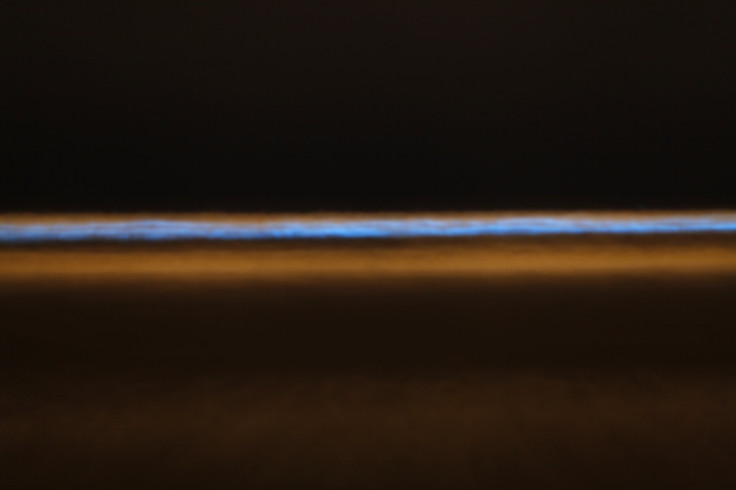Watch: Eerie Bioluminescence After Red Tide Develops Off Southern California Coast

A red tide developed off parts of Southern California has left several beachgoers stunned by the display of eerie bioluminescence light. Various photos and videos of the phenomenon witnessed during the nighttime were shared on social media.
The phenomenon is caused by an algae bloom called bioluminescent phytoplankton that lights up when the microorganisms move through the sea as the waves crashes. It's called a red tide, which is unpredictable, because the reflection of light off the tiny creatures' bodies gives the water a red tint.
Red Tide was first spotted Monday off the coast of San Diego to Encinitas. Oceanographer Michael Latz told the San Diego Union-Tribune the last time such a phenomenon was seen was in September 2013.
“The water contains dense numbers of dinoflagellates especially Ceratium falcatiforme and Lingulodinium polyedra, As L. polyedra (formerly Gonyaulax polyedra), which is well known for its bioluminescent displays,” Latz, a bioluminescence expert at the University of California-San Diego’s Scripps Institution of Oceanography, explained what happens.
The red tide is most visible during the day between 11 a.m. and 1 p.m. EDT, according to Scripps biological oceanographer Peter Franks.
A red tide offshore San Diego is bringing a spectacular display of #bioluminescence to beaches at night, as captured in this photo by John H. Moore. Scripps scientist Michael Latz said the red tide is due to massive numbers of dinoflagellates including Lingulodinium polyedra. 🌊 pic.twitter.com/JnSlXGBuEs
— Scripps Institution of Oceanography (@Scripps_Ocean) May 8, 2018
Stephen Bay, a Southern California-based photographer, took a picture of the illuminating visual Monday at Torrey Pines.
"It kind of looked like the color of a light saber," Bay said, according to CBS News. "It really was a bright blue color that was just fantastic to look at."
Bioluminescence tonight at Torrey Pines, San Diego: https://t.co/DJeeyiPYZm #Science
— Thinking out random (@AlsoGrateful) May 9, 2018
However, not all red tides, or harmful algal blooms (HAB), produce the light display. A popular HAB occurs every year off Florida's Gulf Coast, according to the National Oceanic and Atmospheric Administration.
"This bloom, like many HABs, is caused by microscopic algae that produce toxins that kill fish and make shellfish dangerous to eat. The toxins may also make the surrounding air difficult to breathe. As the name suggests, the bloom of algae often turns the water red," NOAA states, adding that not all algal blooms are harmful.
"Most blooms, in fact, are beneficial because the tiny plants are food for animals in the ocean. In fact, they are the major source of energy that fuels the ocean food web," NOAA noted. "A small percentage of algae, however, produce powerful toxins that can kill fish, shellfish, mammals, and birds, and may directly or indirectly cause illness in people. HABs also include blooms of non-toxic species that have harmful effects on marine ecosystems. For example, when masses of algae die and decompose, the decaying process can deplete oxygen in the water, causing the water to become so low in oxygen that animals either leave the area or die."
© Copyright IBTimes 2025. All rights reserved.





















